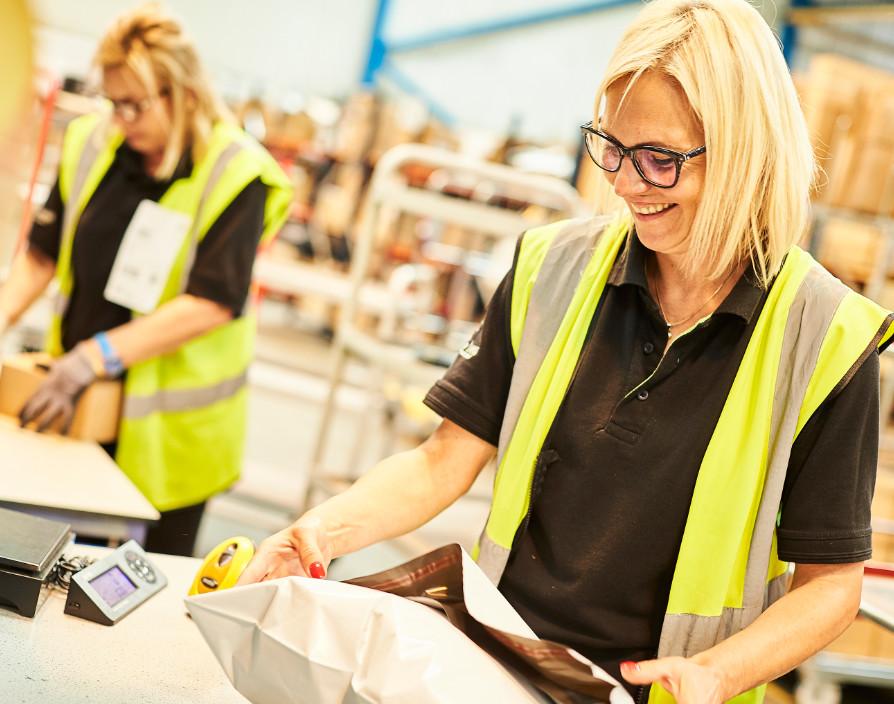Many are wondering if the cost of living crisis is the last straw for free returns as retailers face escalating cost pressures.
Many are wondering ifthe cost of living crisis is the last straw for free returns. As retailers face escalating cost pressures, even nominal returns payments will not safeguard margins. Yet, as retailers fear disenfranchising customers with increased return fees, a growing number of customers are expressing interest in businesses that embrace the circular economyand provide sustainable products. Retailers can tackle this through a combination of increasingly effective fulfilment and returns processes with strong ethical positioning to considerably decrease costs, whilst uplifting consumer perception, explains James Hyde, chief product officer & founder, James and James Fulfilment.
Rising Issue
The price of returns is under a spotlight as retailers take on the golden quarter. The cost of living crisis is raising concerns that this peak season will see more returns than last year’s record level as customers are becoming more considered in their purchasing decisions – particularly within fashion.
A probable trend will see customers not immediately reducing their order value, but opting to keep fewer items. Worryingly, the act of purchasing an item, using it and then returning it as ‘unused’ to receive a full refund – coined as ‘wardrobing’ – is rising.
Consumers making impulsive purchases will be more likely to reconsider their spending patterns, particularly if there are delivery delays, while many will be actively seeking out better deals.
Of course, consumers aren’t always at fault. Occasionally a customer might receive an incorrect order, or a product that is, perhaps, not as advertised. Complications can include damaged items on arrival or late delivery – all reasonable justifications for requesting a return. On occasion, a consumer will have had a negative experience with the company after placing an order. These issues should be a priority and are all within the retailer’s responsibility to resolve.
Retailers can optimise operations and decrease returns through outsourced fulfilment that leverages a single, integrated order management system (OMS), Warehouse Management System (WMS) and courier management system (CMS). Carefully managed and tracked delivery services should be complemented by 99.9% accurate picking and packing and same day dispatch as a given. It’s possible to eliminate ‘retailer blame’ reasons for returns through ensuring each stage of the fulfilment process is optimised and accurate, enabling the focus to move towards adjusting consumer behaviours.
Toughening up
Retailers are certainly cracking down. Times are changing after decades of free returns as major retailers (Boohoo, Next, Uniqlo, and Zara to name a few) have removed free returns this year. Whilst headlines portray a need to decrease the number of “try-on hauls” seen on TikTok and YouTube, data also remains crucial to both understanding trends and identifying problematic consumers. After repeated returns and complaints, both John Lewis and Amazon banned the same customer in August.
To highlight errors within the retailer’s processes and/or products, fast and accurate fulfilment data is crucial. Issues such as repeated returns of the same product due to large sizing, for example, can be overcome by including advice to size down and adjusting the product description. Consistently faulty electrical items are a significant reputational and financial drain and should be quickly withdrawn from sale to minimise loss.
Another fundamental to tackling the inventory issues generated from returns is information. Replenishing stock takes time and money. In the absence of live, up to the second inventory data sent directly to the webstore, retailers will find themselves left with unsold items, potentially causing them to miss the critical Black Friday and Christmas trading periods. What’s more, retailers must develop their understanding of the true cost of returns to the business to improve assessments of the margins on products and support merchandising decisions. To safeguard future margins, establishing whether products from particular suppliers or manufacturers are more likely to be returned than others, for example, is key.
Reevaluating perspectives
The volume of returns can be impacted by improved eCommerce operations. Additionally, retailers can alter their messaging and communicate the significance of sustainable purchasing patterns. Returns have notable environmental repercussions, in addition to increased labour intensive tasks such as shipping and transport and sorting and refolding. Damaged items occasionally wind up in landfill, and plastic poly bags cannot be reused.
Combining a small return price, with increasingly cost-conscious consumers could have substantial environmental benefits, while nurturing customers’ views of the retailer. Furthermore, circularity and consumer perceptions of sustainability are becoming more fundamental to driving customer engagement than ever, during and at the end of product life, according to Deloitte. Additionally, consumers have demonstrated an ability to adjust their behaviours, with a key example being the introduction of the five pence charge in 2015 for plastic bags. This reduced usage by 85% in the first year, with the amount purchased consistently dropping since.
Conclusion
Sharing sustainability issues with customers can be beneficial for retailers. Consumer perceptions of a retailer are increasingly informed through the way returns policies are considered, presented and delivered. If done correctly, an efficient, effective and expertly communicated returns model will both uplift reputations and mitigate costs.
Share via:








































